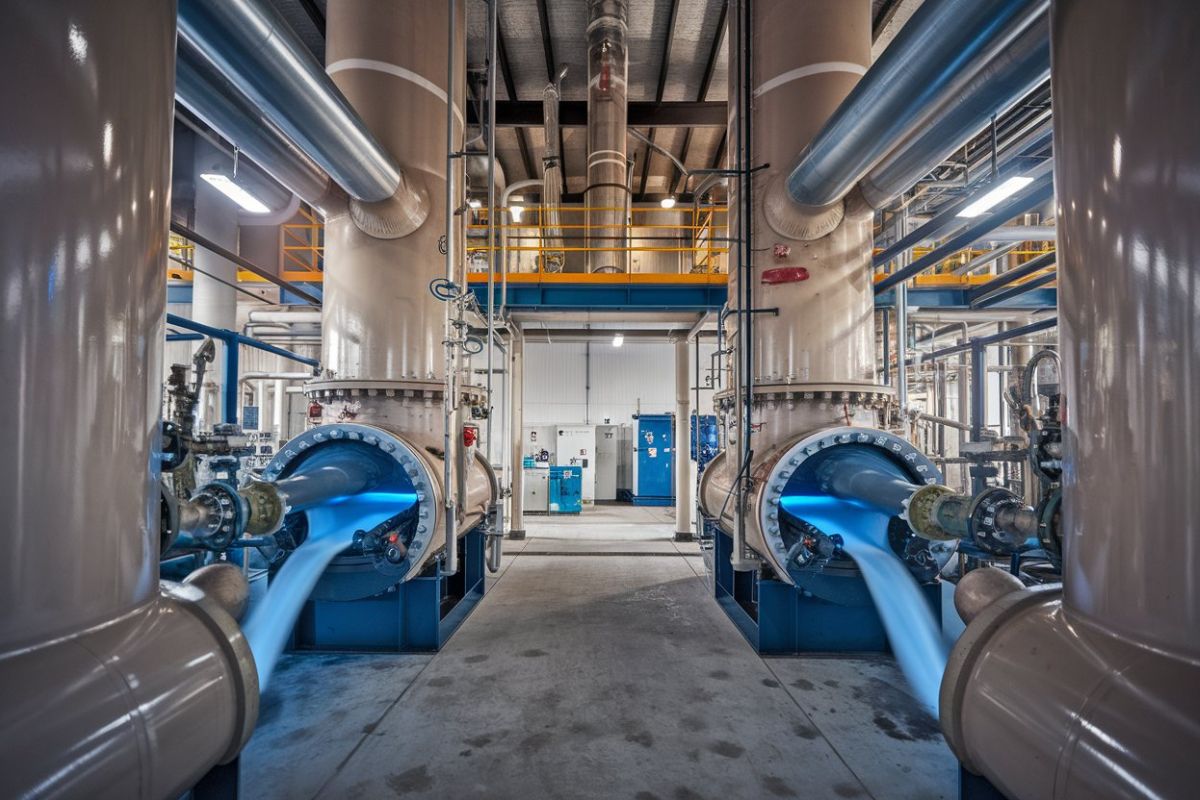
What is the Haber Process? The Haber Process is a method used to synthesize ammonia from nitrogen and hydrogen gases. This chemical reaction, discovered by Fritz Haber in the early 20th century, revolutionized agriculture by providing a way to produce fertilizers on a massive scale. Why is it important? It plays a crucial role in feeding the world's population, as ammonia is a key ingredient in fertilizers that boost crop yields. Without it, modern agriculture would struggle to sustain the growing demand for food. How does it work? The process involves combining nitrogen from the air with hydrogen derived from natural gas under high pressure and temperature, using an iron catalyst. This method not only supports agriculture but also impacts various industries, making it a cornerstone of modern chemistry.
Key Takeaways:
- The Haber Process is a vital method for making ammonia, which is used in fertilizers to help grow food. It was developed by Fritz Haber and Carl Bosch and has helped feed nearly half the world's population.
- While the Haber Process has boosted food production, it also has environmental impacts like greenhouse gas emissions and soil degradation. Scientists are working on making the process more eco-friendly for the future.
What is the Haber Process?
The Haber Process is a method used to synthesize ammonia from nitrogen and hydrogen gases. This process is crucial for producing fertilizers, which help feed the world. Let's dive into some fascinating facts about this essential chemical process.
- The Haber Process was developed by German chemist Fritz Haber in the early 20th century.
- Carl Bosch, an industrial chemist, scaled up the process for large-scale production, leading to its alternative name, the Haber-Bosch Process.
- Ammonia produced through this method is a key ingredient in fertilizers, which support global agriculture.
- The process involves combining nitrogen from the air with hydrogen derived from natural gas.
- High temperatures (400-500°C) and pressures (150-200 atmospheres) are required for the reaction to occur efficiently.
- An iron catalyst is used to speed up the reaction, making it more practical for industrial use.
- The Haber Process consumes about 1-2% of the world's energy supply due to its high energy requirements.
- It is estimated that the Haber Process supports nearly half of the global population by providing essential nutrients for crops.
- Before the Haber Process, natural sources like guano and nitrate deposits were the primary sources of nitrogen for fertilizers.
- The process has significantly increased agricultural productivity, helping to prevent famines and food shortages.
Environmental Impact of the Haber Process
While the Haber Process has revolutionized agriculture, it also has some environmental consequences. Here are some key points to consider.
- The production of ammonia releases significant amounts of carbon dioxide, contributing to greenhouse gas emissions.
- Overuse of nitrogen-based fertilizers can lead to soil degradation and reduced fertility over time.
- Runoff from fertilized fields can cause water pollution, leading to algal blooms and dead zones in aquatic ecosystems.
- Efforts are being made to develop more sustainable methods of ammonia production, such as using renewable energy sources.
- Researchers are also exploring ways to improve the efficiency of the Haber Process to reduce its environmental footprint.
Historical Significance of the Haber Process
The Haber Process has played a pivotal role in shaping modern history. Here are some intriguing historical facts.
- During World War I, Germany used the Haber Process to produce explosives, as it provided a source of nitrogen for munitions.
- Fritz Haber received the Nobel Prize in Chemistry in 1918 for his work on ammonia synthesis.
- The process has been both praised for its contributions to food production and criticized for its role in warfare.
- The development of the Haber Process marked a significant advancement in chemical engineering and industrial chemistry.
- It has inspired further research into synthetic processes for other essential chemicals, such as methanol and hydrogen.
Future of the Haber Process
As technology advances, the future of the Haber Process looks promising. Here are some potential developments to watch for.
- Scientists are working on alternative catalysts that could make the process more energy-efficient and environmentally friendly.
The Haber Process remains a cornerstone of modern agriculture and industry, with ongoing research aimed at improving its sustainability and efficiency.
The Impact of the Haber Process
The Haber Process revolutionized agriculture and industry, making it possible to produce ammonia on a large scale. This breakthrough has been crucial for creating fertilizers, which in turn have boosted food production worldwide. Without this process, feeding the growing global population would be a much tougher challenge.
Beyond agriculture, ammonia from the Haber Process is essential in manufacturing plastics, explosives, and pharmaceuticals. Its impact stretches far beyond just one sector, touching various aspects of modern life.
However, the process isn't without its downsides. It consumes a lot of energy and contributes to environmental issues like greenhouse gas emissions. Balancing its benefits with these challenges remains a key concern.
Understanding the Haber Process gives us insight into how science can solve big problems while also presenting new ones. It’s a reminder of the complex relationship between innovation and sustainability.
Frequently Asked Questions
Was this page helpful?
Our commitment to delivering trustworthy and engaging content is at the heart of what we do. Each fact on our site is contributed by real users like you, bringing a wealth of diverse insights and information. To ensure the highest standards of accuracy and reliability, our dedicated editors meticulously review each submission. This process guarantees that the facts we share are not only fascinating but also credible. Trust in our commitment to quality and authenticity as you explore and learn with us.
